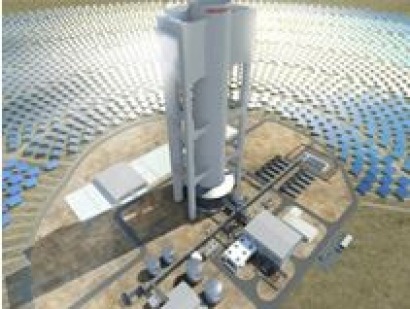
The concentrating solar power (CSP) plants were two of the 28 renewable energy projects announced late 2011 by the South Africa Department of Energy (DOE). The DOE intends to bring 17,800 MW of renewable energy online by 2030.
Abengoa is partnering with the state-owned Industrial Development Corporation (IDC), South Africa´s largest development finance institution, to create South Africa´s clean energy future by allowing the country to reduce its dependence on fossil fuel for power generation, specifically coal.
Abengoa, who will build, operate and maintain the plants, owns 51 percent of the projects, the IDC holds 29 %, and the Black Economic Empowerment program maintains the remaining 20 percent.
Both plants signed long term power purchase agreements with Eskom, South Africa's power utility, and closed project finance agreements with a group of South African and international financial institutions.
Khi Solar One and KaXu Solar One, located in the Northern Cape Province near Upington and Pofadder respectively, will use advanced technology to provide South Africa with clean energy while creating local jobs and industry in the region.
In addition to reducing the country’s carbon dioxide emissions by about 498,000 tons each year, the construction of Khi Solar One and KaXu will create roughly 1400 local construction jobs on average per annum, peaking near 2000, and about 70 permanent operation jobs. Numerous direct and indirect jobs will also be created to fulfill the needs required by the plant and its construction.
Abengoa has developed proprietary technology to meet South Africa’s needs and make solar an excellent solution. Both Khi Solar One and KaXu Solar One use the advanced dry cooling technology, which reduces water consumption compared to other CSP plants by approximately two-thirds.
The plants also have storage capacity of about two hours for Khi and three hours for KaXu, which can be used during transient periods and after sunset. CSP’s ability to be dispatchable will be a great advantage for South Africa as it will permit the country to bring more intermittent technologies, such as photovoltaics and wind into their renewable energy mix.
For additional information:

